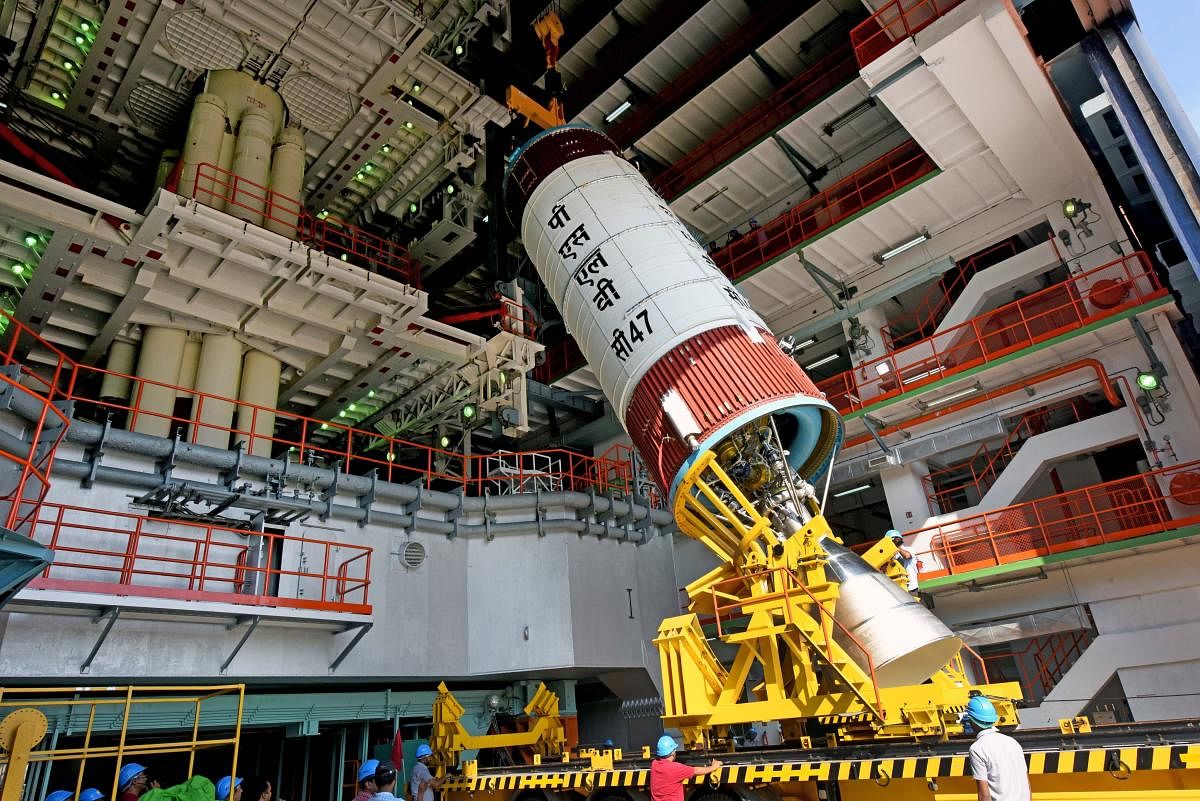
The Indian Space Research Organisation (Isro) on Tuesday began the countdown for the launch of CARTOSAT-3, its earth imaging and mapping satellite from the Satish Dhawan Space Centre in Sriharikota at 9.28 am on Wednesday.
The satellite will be launched aboard the Polar Satellite Launch Vehicle (PSLV-C47) along with 13 other nano-satellites from the United States. It will be placed in an orbit of 509 km at an inclination of 97.5 degree. The 26-hour countdown commenced at 7.28 am on Tuesday, the space agency said in an update.
On its 49th mission, PSLV-C47 will put into orbit CARTOSAT-3, a third-generation agile advanced satellite equipped with high-resolution imaging capability. The satellite has an overall mass of 1,625kgs, and will cater to rising demands for large scale urban planning, rural resource and infrastructure development, coastal land use and land cover.
For PSLV-C47, Wednesday's launch will be the 21st flight in the 'XL' configuration (with six solid strap-on motors), according to Isro. The 13 American commercial nano-satellites are part of Isro's commercial arrangement with NewSpace India Ltd (NSIL), Department of Space.
Of the 13 nano-satellites, 12 are FLOCK-4P, with mission objective of earth observation, and one satellite, MESHBED, whose mission objective is a communication testbed.
The mission life of CARTOSAT-3 will be five years. For ISRO, this is the first major launch after the moon mission Chandrayaan-2 on July 22, which could not achieve the planned soft-landing on the polar surface of the moon.
ISRO had lost contact with the Chandrayaan-2 Lander, Vikram, leading to a hard-landing on the lunar surface on September 7.